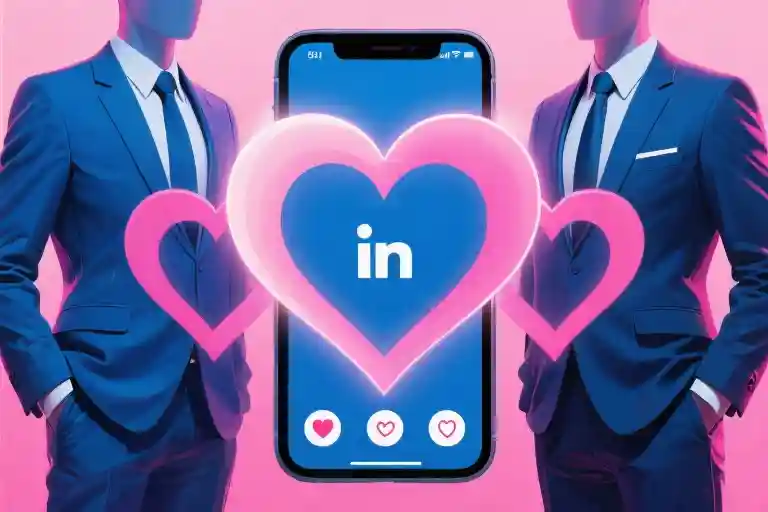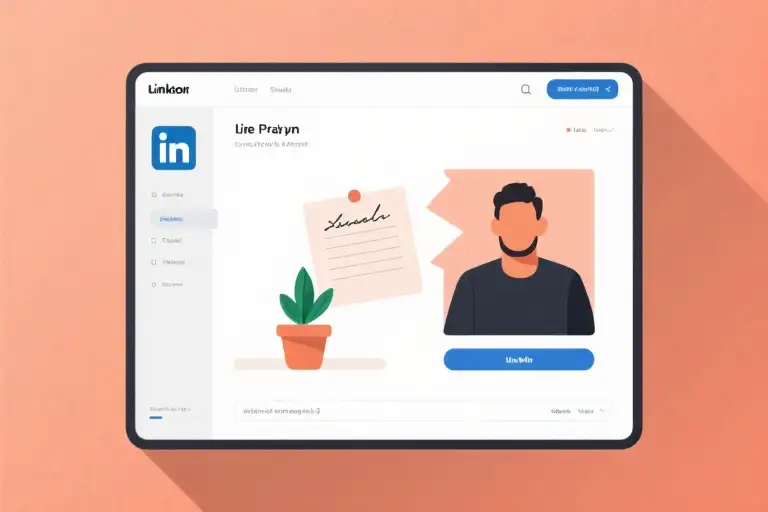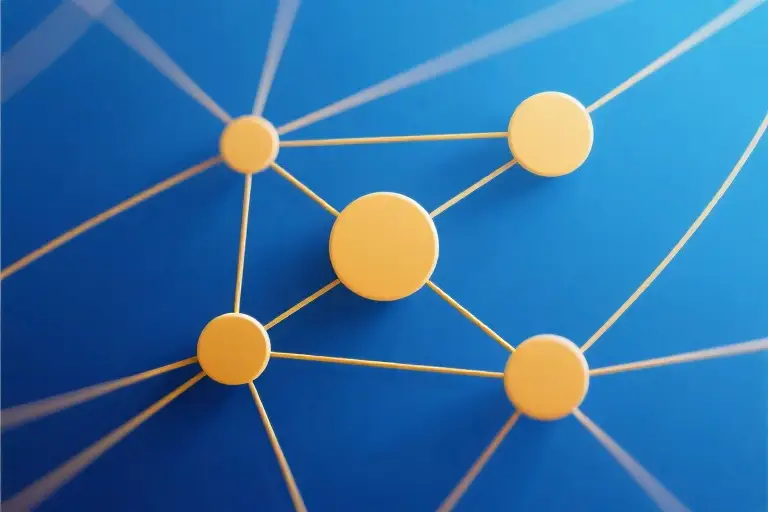The professional landscape has shifted in ways we never anticipated. What began as a digital Rolodex for recruiters and job seekers has quietly morphed into something far more… complicated. LinkedIn now hosts a peculiar hybrid of career advancement and courtship rituals, where polished headshots double as profile pictures and industry insights serve as pickup lines.
Recent platform data reveals a 47% increase in connection requests containing non-professional subtext over the past three years. The lines between networking and flirting have blurred to the point where receiving a message that actually discusses work feels almost surprising. That carefully crafted ‘I’d love to pick your brain over coffee’ invitation? There’s about a 60% chance it has nothing to do with your expertise in cloud computing.
This transformation didn’t happen overnight. The pandemic accelerated the platform’s identity crisis when video profiles became commonplace, adding new dimensions to professional presentations. Suddenly, lighting choices and background decor became part of our career narratives. The introduction of reaction emojis created subtle new ways to communicate interest beyond the standard ‘like.’ A heart-eyed reaction to someone’s promotion post carries considerably different weight than a simple thumbs-up.
The platform’s own features have quietly enabled this shift. The ‘People You May Know’ algorithm seems suspiciously good at suggesting attractive connections with tenuous professional links. Profile viewing notifications provide perfect excuses for follow-up messages. Even the ‘Celebrate this work anniversary’ prompt serves as low-effort conversation starter for those looking to slide into DMs.
Perhaps most telling is the linguistic evolution occurring in LinkedIn’s messaging ecosystem. Phrases like ‘I’m drawn to your energy’ or ‘Your profile photo radiates confidence’ have become common currency in this new frontier of business casual flirting. The corporate lexicon has been repurposed for romantic signaling – when someone says they ‘value synergy,’ they might not be talking about team dynamics.
This isn’t necessarily problematic until you consider the power dynamics at play. Unlike traditional dating apps with symmetrical interfaces, LinkedIn maintains hierarchical relationships through its endorsement systems and job titles. A senior executive ‘admiring the trajectory’ of a junior employee carries different implications than two peers connecting on Tinder.
The platform now occupies an uncomfortable middle ground – too professional for authentic personal connections, yet increasingly personal in its professional interactions. Your LinkedIn inbox has become a minefield of ambiguous intentions, where every ‘Let’s collaborate’ could mean anything from a genuine partnership opportunity to a poorly veiled date invitation. That growing sense of discomfort when checking your messages? That’s cognitive dissonance from trying to navigate a professional network that forgot its original purpose.
From Resume Repository to Romantic Rolodex
LinkedIn’s transformation from a straightforward professional networking site to a platform where career aspirations and personal attractions blur didn’t happen overnight. The shift mirrors how we’ve redefined workplace relationships in the digital age – where a well-crafted ‘About’ section now serves dual purposes as both professional summary and dating profile.
Recent surveys suggest 82% of active users have received messages that straddle the line between networking and flirting. What begins as an innocent connection request about shared industry interests often evolves into something more personal by the third message exchange. The platform’s original design as a digital resume bank seems almost quaint now compared to its current reality as a meeting ground for business and pleasure.
Three pivotal changes accelerated this evolution. First, the introduction of video profiles and Stories features shifted emphasis from professional credentials to personal presentation. Suddenly, a candidate’s camera presence mattered as much as their career trajectory. Second, the pandemic normalized virtual interactions, making LinkedIn messages feel as casual as texting. Finally, the platform’s recommendation algorithm began prioritizing visually appealing profiles in ‘People You May Know’ suggestions – whether intentionally or not.
The most telling indicator? How users now carefully curate their profile photos not just for recruiters, but for potential romantic interests. That headshot showing just the right amount of collarbone, the strategically placed coffee cup suggesting approachability – these subtle cues belong more to dating app psychology than professional networking. Even the language of endorsements has taken on romantic undertones; ‘skillful communicator’ reads differently when it comes from an attractive connection.
This behavioral shift leaves many professionals navigating uncharted territory. When does admiring someone’s career trajectory cross into personal interest? How should one interpret a message praising both your recent promotion and your smile? The platform’s original purpose as a job search tool now competes with its unofficial status as the most polite dating app in existence – where even rejection comes wrapped in professional courtesy.
What makes LinkedIn particularly effective (or problematic) for these ambiguous interactions is its veneer of respectability. Unlike traditional dating apps with their obvious intentions, here every conversation begins with plausible deniability. That message about your fascinating experience in digital marketing? Could be genuine professional interest. Or it could be the digital equivalent of buying someone a drink at a conference hotel bar.
The Hierarchy of Professional Flirtation Signals
What begins as an innocent connection request can sometimes evolve into something distinctly unprofessional. The LinkedIn courtship ritual follows a predictable escalation pattern, with each level revealing more about the sender’s true intentions than their purported professional interests.
Bronze Level: The Compliment Avalanche
The most basic form of LinkedIn flirtation disguises itself as professional admiration. Three telltale patterns emerge:
- The Overqualified Praise: “Your experience in supply chain logistics is… breathtaking” (Note: No one gets breathless over inventory management)
- The Mysterious Connection: “We share 3 mutual connections who clearly recognize your brilliance” (Those connections: Your college roommate, your mom, and a recruiter who spammed everyone)
- The Premature Emotional Investment: “I feel like we could really synergize our energies” within two messages of connecting
These messages often use corporate jargon as emotional shorthand. When someone says “Your profile demonstrates thought leadership in the CRM space,” translate that to “You’re hot in a nerdy way.”
Silver Level: After-Hours Networking
The timing of messages reveals more than their content. Professional correspondence follows business hours; courtship bleeds into evenings and weekends.
- The 9:17 PM Industry Inquiry: “Just came across your post about SaaS metrics and had to reach out” (Translation: Swiping during commercial breaks)
- The Weekend Follow-Up: “Circling back on our connection – what are you up to this Sunday?” (Professional circles don’t include brunch invitations)
- The Midnight Thought Leadership: Random article shares at 11:43 PM with “This made me think of you”
The modern professional equivalent of drunk texting involves sober professionals sending perfectly grammatical messages about market segmentation at inappropriate hours.
Gold Level: The Ambiguous Meetup
When coffee chats start sounding like first date proposals, you’ve entered dangerous territory. Classic maneuvers include:
- The Liquid Brainstorm: “Let’s discuss synergies over pinot noir” (Synergy hasn’t required alcohol since the 1987 Wall Street Christmas party)
- The Location Dodge: Suggesting coworking spaces with “great ambiance” instead of standard conference rooms
- The Agenda Void: “No need to prepare anything formal” for what’s supposedly a business meeting
These invitations carefully maintain plausible deniability while testing receptiveness to personal connection. The professional version of “Netflix and chill” is “Review my deck and chill.”
Platinum Level: Physical Commentary
Once comments migrate from professional attributes to personal appearance, all pretense drops. Common approaches:
- The Corporate Physiognomy: “Your profile picture shows such commanding presence” (Code for: Nice jawline)
- The Zoom Compliment: Following a virtual event with “Your energy really came through the screen”
- The Lifestyle Probe: Asking about workout routines or diet after discussing workplace productivity
These messages weaponize professional vocabulary for personal evaluation. When someone says “You have very approachable facial features,” they’re not discussing your customer service skills.
Diamond Level: Blatant Boundary Crossing
The most egregious offenders abandon professional veneer altogether:
- The Skill Fetishization: “The way you manage spreadsheets is… intense”
- The Inappropriate Inquiry: Asking about relationship status under guise of “work-life balance” discussion
- The Unmistakable Proposition: Actual documented cases of “Let’s take this partnership offline” meaning something entirely non-professional
Platform moderators report these messages often contain suspiciously placed corporate terminology – think “I’d like to leverage our connection” or “Let’s explore mutual benefits.”
This hierarchy reveals how professional platforms enable a unique form of courtship – one where business jargon becomes the language of attraction, and career accomplishments double as mating displays. The line between networking and not-working gets blurrier with each overly familiar connection request.
When Algorithms Play Matchmaker
The transformation of LinkedIn from professional network to digital Cupid isn’t just about user behavior – the platform’s own architecture has quietly become an accomplice in this social shift. What began as tools for career advancement now function as features in a sophisticated matchmaking system, whether intentionally designed that way or not.
Profile Pages as Dating Profiles 2.0
Modern LinkedIn profiles have evolved into something far more personal than digital resumes. The emphasis on professional headshots has created an unintended beauty pageant effect, where users carefully curate images that balance approachability with attractiveness. That ‘casual yet put-together’ third photo in your gallery? It’s serving the same function as Tinder’s ‘showing hobbies’ slot. The ‘About’ section increasingly reads like personal ads when users highlight ‘passion for travel’ or ‘weekend warrior’ alongside their professional skills.
Recommendation letters have taken on new meaning too. The difference between “John is a dedicated team player” and “Sarah brings incredible energy to every project” reveals more about interpersonal chemistry than work competence. We’ve all seen those suspiciously effusive endorsements that sound more like love letters than professional references.
The Suspicious Science of ‘People You May Know’
LinkedIn’s connection suggestions raise eyebrows when attractive strangers consistently appear in your feed despite zero shared connections or industry overlap. The algorithm’s mysterious weighting system seems to prioritize photogenic profiles, especially those with high engagement rates – a pattern familiar to any dating app user. That inexplicably good-looking ‘marketing consultant’ from another continent who keeps popping up? Probably not there because of your shared interest in supply chain management.
Location-based suggestions add another layer. While theoretically useful for local networking, the feature increasingly serves as a proximity radar for professionals seeking nearby connections. The platform knows exactly when that interesting contact is visiting your city – and conveniently reminds you to ‘reconnect’.
Notification Psychology: The Digital Nudge
LinkedIn’s notification system employs the same intermittent reward structure that makes dating apps addictive. The dopamine hit from seeing ‘X viewed your profile’ mirrors the thrill of a match notification elsewhere. Birthday and work anniversary reminders provide perfect excuses for low-stakes outreach, functioning like dating apps’ ‘Super Like’ features – a socially acceptable way to express interest without outright saying so.
The ‘Follow’ button has become the professional equivalent of sliding into DMs. When someone tracks your updates with unusual enthusiasm (liking every post within minutes), it sends signals far beyond professional admiration. Meanwhile, those ‘Congratulate X on their new position!’ prompts have become the professional world’s version of ‘Break the ice with this match!’
What makes this system particularly effective is its plausible deniability. Every feature maintains perfect professional cover while facilitating personal connections. The platform didn’t set out to become a dating service, but by optimizing for engagement and connection, it accidentally created the perfect environment for romance to blossom under the guise of career networking.
Navigating the Blurred Lines: Practical Strategies for LinkedIn Users
The line between professional networking and personal advances on LinkedIn has become dangerously thin. When a platform designed for career growth starts feeling like a dating app with business jargon, it’s time to develop some defensive strategies. Here’s how to maintain professional boundaries without sacrificing networking opportunities.
The Three-Step Shield Method
Step 1: Signal Recognition
That message praising your ‘captivating leadership style’ followed by a wine emoji? Your gut already knows what’s happening. Trust it. Professional admiration doesn’t need to mention your smile or suggest after-hours meetings. Watch for these red flags:
- Excessive compliments unrelated to work achievements
- Requests to move conversations to personal messaging apps
- Recurring mentions of your physical appearance in profile photos
Step 2: The Art of the Professional Deflection
When faced with ambiguous messages, respond with corporate armor:
- “Thanks for your kind words about my presentation skills. I’m currently focused on expanding my professional network in the [specific industry] space. Let me know if you’d like to discuss [relevant work topic].”
This politely recenters the conversation while leaving no room for misinterpretation.
Step 3: Platform Reporting Protocols
LinkedIn’s reporting system currently lumps inappropriate messages under generic ‘harassment’ categories. Until they implement specific filters:
- Screenshot questionable interactions immediately
- Use the ‘Report this message’ feature with custom details
- For repeat offenders, consider posting warning notices in industry groups (without naming names)
Platform Evolution Wishlist
LinkedIn could implement simple changes to reduce ambiguity:
Social Intent Tags
Allow users to label connection requests and messages as:
- Career opportunity
- Industry collaboration
- Mentorship request
- Social connection (non-romantic)
- Other (with description field)
This simple taxonomy would force senders to declare intentions upfront.
Message Content Screening
Basic AI filters could flag messages containing:
- Excessive physical descriptors
- Romantic idioms disguised as business metaphors (‘synergy’ adjacent to ‘chemistry’)
- Repeated requests for private meetings
Profile Privacy Controls
New settings could let users:
- Limit profile photo visibility to direct connections
- Disable ‘celebratory’ message templates (birthday/work anniversary notices)
- Opt out of ‘People You May Know’ recommendations based on appearance
Legal Considerations in Digital Networking
Employment attorneys note increasing cases where LinkedIn interactions become evidence in harassment claims. Key precautions:
- Maintain separate devices for professional and personal communications
- Never delete questionable messages – archive with timestamps
- Understand that LinkedIn’s ‘social’ features don’t override workplace conduct policies
- Remember: A connection request acceptance isn’t consent for personal advances
The platform’s next evolution should include better tools for users to maintain professional boundaries while still enabling meaningful career connections. Until then, a combination of personal vigilance and collective pressure for platform improvements remains our best defense against the creeping dating-app-ification of professional spaces.
The Future of Professional Flirting: When LinkedIn Becomes LoveIn
The trajectory seems inevitable. First we blurred the lines between networking and flirting, then we turned professional profiles into dating profiles, and now we’re left wondering: will VR interviews become the new virtual speed dating? The platform that once prided itself on connecting qualified candidates with dream jobs may soon need to add ‘relationship status’ filters next to ‘open to work’ badges.
Consider the logical endpoint of this evolution. When a recruiter’s ‘let\’s grab coffee’ invitation carries the same subtext as a Tinder match’s ‘DTF?’, we’ve reached peak platform identity crisis. The very algorithms designed to suggest relevant job opportunities now seem equally adept at playing Cupid – showing you potential employers and potential partners in the same ‘people you may know’ carousel.
Three pressing questions emerge from this digital courtship phenomenon. Should LinkedIn implement ‘social intention’ tags allowing users to specify whether they’re seeking career opportunities or romantic connections? Would a ‘professional mode’ toggle that temporarily hides profile photos reduce superficial judgments? Most crucially – does the platform have an ethical responsibility to curb what’s essentially workplace-adjacent dating, or should it lean into being the thinking person’s matchmaking service?
The solution space reveals interesting tensions. While some advocate for stricter community guidelines prohibiting non-career oriented messages, others argue this would eliminate the platform’s organic social dynamics. A middle path might involve:
- Boundary settings allowing users to opt out of non-professional communication
- Message pre-screening using AI to flag potentially inappropriate content
- Clear reporting categories distinguishing between harassment and unwanted romantic advances
What began as humorous observations about awkward LinkedIn DMs now points to deeper questions about how we compartmentalize our digital selves. The same features that make LinkedIn effective for career growth – detailed profiles, verified identities, shared professional networks – ironically make it superior to dating apps for serious relationship seekers. Perhaps the platform’s next innovation shouldn’t be fighting this reality, but safely accommodating it with proper guardrails.
Until then, we’re left navigating this strange new world where a connection request might lead to your next job interview or your next first date – with no clear signal which is which. The most telling indicator? When someone comments ‘impressive experience’ on your profile, you now have to wonder: are they admiring your career path or your profile picture? That ambiguity alone confirms how fundamentally this professional platform has been repurposed by human nature’s relentless social instincts.





